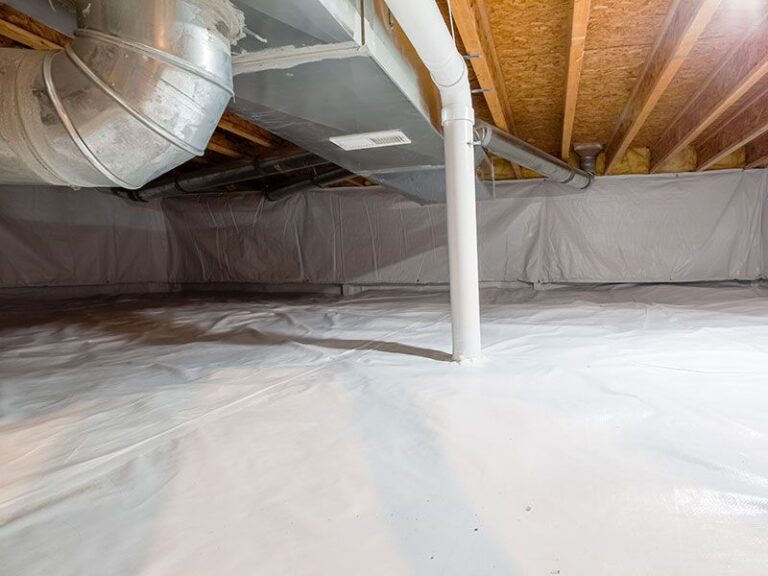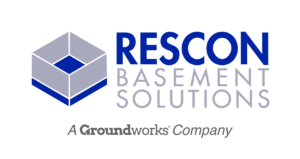Understanding What A Vapor Barrier Does
Apr 23, 2024
Understanding What A Vapor Barrier Does
When it comes to creating a home that is comfortable, energy-efficient, and durable, understanding the role of a vapor barrier is crucial. From preventing moisture from seeping into your walls to maintaining proper indoor air quality, a vapor barrier plays a vital part in your building’s overall health. So, let’s dive into what exactly a vapor barrier does and why it’s essential for every homeowner to grasp its importance. Click here to learn more about how Rescon Basement Solutions can help you!
Understanding What A Vapor Barrier Does
A vapor barrier is a material used to prevent moisture from passing through walls, ceilings, and floors. It acts as a shield, protecting your home from potential water damage and mold growth. By controlling the transfer of moisture vapor, it helps maintain a balanced indoor environment.
Without a vapor barrier, moisture can seep into your walls and insulation, leading to structural issues and health hazards. This protective layer ensures that humidity levels remain stable inside your home, reducing the risk of condensation and rot.
In warmer climates, vapor barriers are typically installed on the interior side of walls to prevent humid air from entering living spaces. In colder regions, they are placed on the exterior side to keep out cold air while allowing trapped moisture to escape.
Understanding how a vapor barrier works is key to creating a well-insulated and healthy living space for you and your family.
What does a vapor barrier do?
A vapor barrier is a crucial component in building structures, acting as a protective layer against moisture infiltration. It works by preventing water vapor from passing through walls or floors, ultimately reducing the risk of mold growth and structural damage. By controlling moisture levels, it helps maintain a comfortable and healthy indoor environment.
Think of a vapor barrier as a shield that keeps unwanted moisture out of your home or building. Without it, condensation can build up within walls and insulation, leading to potential issues like rotting wood or corrosion. In colder climates especially, where temperature differences between indoors and outdoors are more extreme, having a vapor barrier becomes even more essential.
Whether you’re constructing a new home or renovating an existing one, understanding the role of a vapor barrier is key to ensuring the longevity and durability of your structure. Proper installation and placement are critical for effective moisture control throughout the year.
What can I use as a vapor barrier?
When it comes to choosing a vapor barrier, there are several options available. One common choice is plastic sheeting, which is affordable and easy to install. It’s crucial to ensure that the plastic sheeting used is designed specifically as a vapor barrier.
Another option is using foil-faced insulation, which can act as both insulation and a vapor barrier. This type of material reflects heat back into the building while also preventing moisture from seeping through.
For a more eco-friendly alternative, some people opt for recycled materials like cardboard or paper products treated with chemicals to resist moisture. These materials can be effective as vapor barriers when installed correctly.
The best choice for a vapor barrier will depend on factors such as climate, budget, and personal preferences. It’s essential to consult with building professionals to determine the most suitable option for your specific project requirements.
Where do I need a vapor barrier?
When it comes to understanding where you need a vapor barrier, it’s crucial to consider the specific areas in your home or building that require protection against moisture. In general, vapor barriers are typically installed on the warm side of insulation in areas prone to high humidity levels, such as basements and crawl spaces.
These barriers play a vital role in preventing moisture from seeping into walls and causing damage over time. Attics are another common location where vapor barriers are necessary, especially in colder climates where condensation can occur during temperature fluctuations.
In addition to these key areas, vapor barriers may also be needed in exterior walls and under concrete slabs to ensure proper moisture control throughout the structure. By strategically placing vapor barriers in these critical locations, you can effectively mitigate potential issues related to mold growth and structural damage. Click here to learn more about how Rescon Basement Solutions can help you!
Major Problems
When it comes to installing a vapor barrier, there are some major problems that can arise if not properly addressed. One common issue is improper installation, which can lead to gaps or tears in the barrier, compromising its effectiveness. Another problem is using the wrong type of material for the specific application, such as using plastic sheeting instead of a specialized vapor barrier.
Moisture buildup between the insulation and the barrier can occur if there is inadequate ventilation, causing mold and mildew growth. Additionally, overlooking areas where penetrations like pipes or electrical wires pass through can create openings for moisture to seep in. These problems highlight the importance of thorough planning and attention to detail when implementing a vapor barrier in your building project.
To ensure optimal performance and longevity of your structure, it’s crucial to address these issues proactively and seek expert advice if needed.
Building in a Cold Climate While Adhering to Building Codes
Building in a cold climate while adhering to building codes can be challenging, but it’s crucial for the longevity and safety of your structure. The primary focus is on preventing moisture from entering the building envelope, which can lead to issues like mold growth and structural damage. This is where a vapor barrier plays a key role in regulating humidity levels within the building.
In cold climates, condensation can form on surfaces if warm air meets a cold surface. A vapor barrier helps prevent this by blocking moisture from passing through walls and ceilings. By installing a vapor barrier correctly, you can maintain proper insulation levels and reduce energy costs associated with heating.
When constructing in colder regions, it’s essential to follow local building codes that may have specific requirements for vapor barriers based on climate conditions. Failure to comply with these regulations could result in costly repairs down the line or even legal implications.
Consulting with professionals who understand the unique challenges of building in cold climates can help ensure that your project meets all necessary guidelines for a durable and efficient structure.
Double Vapor Barrier – Don’t Do It!
When it comes to vapor barriers, the general rule is: one is enough. Adding a second vapor barrier can actually trap moisture between the two layers, leading to potential issues like mold growth and structural damage. It’s important to understand the purpose of a vapor barrier and follow best practices for installation to ensure your building remains safe and dry.
Remember, proper ventilation and insulation are key components in managing moisture levels within a structure. By understanding what a vapor barrier does, where it should be used, and common problems associated with improper installation, you can make informed decisions when it comes to protecting your building from moisture-related issues. Stay informed, stay vigilant – your building will thank you for it in the long run! Click here to learn more about how Rescon Basement Solutions can help you!

